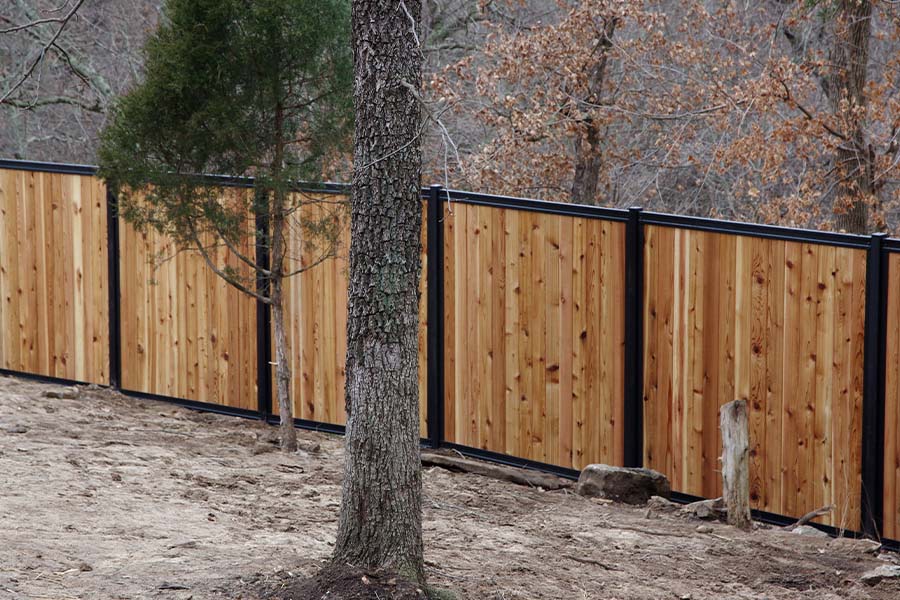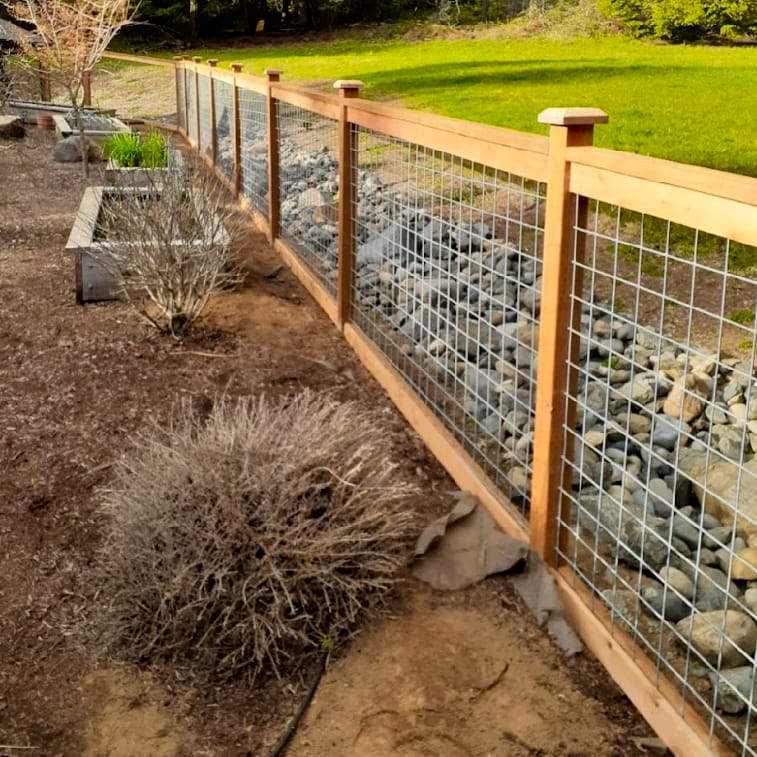All Categories
Featured
When selecting a fencing for your home, it's crucial to take into consideration elements like price, toughness, maintenance, and visual charm. Three of the most preferred materials for household and commercial fencings are aluminum, plastic, and wood.
Timber Fencing. Pros:
![]()
All-natural Aesthetic: Wood fencings are known for their classic, all-natural appearance. They can easily mix into a lot of landscapes and improve the appeal of your home or service. Whether you're aiming for a rustic look or a much more refined finish, wood can be personalized with paint, tarnish, or sealant. Customization: Wood is among the most flexible materials, allowing for a vast range of styles, such as picket fencings, privacy fences, and ranch-style units. It's very easy to adjust the style to fit the specific demands of your home. Inexpensive: Usually, timber fences come at a lower initial price compared to plastic or aluminum, making them an economical alternative for those on a budget. Disadvantages:
Maintenance Needs: Timber fences call for normal upkeep to keep their charm and capability. This consists of discoloration or paint to shield versus rot, termites, and weather condition damages. Without appropriate treatment, wood can deteriorate over time. Shorter Life-span: Compared to plastic or light weight aluminum, wood fencings often tend to have a shorter life-span, particularly in locations with extreme weather condition. Extreme conditions, such as heavy rain, moisture, or snow, can create wood to deteriorate faster. Prone to Damage: Timber fencings are at risk to harm from insects, including termites, as well as natural wear from climate. They may likewise warp or crack if not correctly preserved. Plastic Fencing. Pros:
Low Maintenance: One of the primary advantages of plastic fences is that they require minimal maintenance. Unlike wood, plastic does not require to be painted, sealed, or stained. It's immune to fading, staining, and fracturing, which conserves money and time on upkeep. Toughness: Vinyl is understood for its capability to hold up against extreme weather without wearing away. It's invulnerable to bugs like termites, and its resistance to moisture and UV rays ensures it continues to be looking great for years. Long-Lasting: A vinyl fencing can last as much as 30 years or more, making it a great lasting financial investment. Lots of manufacturers use service warranties, even more improving its worth. Selection of Styles: Vinyl fences are readily available in various colors and designs, including those that mimic timber. You can select from personal privacy, picket, or attractive styles, offering versatility to match your home or business. Disadvantages:
![]()
Greater Upfront Price: Plastic fencings have a tendency to have a higher initial expense than timber. While the long-lasting savings on upkeep are significant, the in advance investment may be a deterrent for some property owners. Minimal Customization: Plastic fencings been available in typical layouts, and while styles and shades are varied, you might not have as much adaptability for personalization contrasted to wood. Breaking in Cold Climates: While vinyl is long lasting, in incredibly cool environments, it can come to be weak and crack upon influence, which can be problematic in locations with harsh winters. Light weight aluminum Fence. Pros:
Low Maintenance: Light weight aluminum fences are understood for their low-maintenance needs. Unlike wood, light weight aluminum doesn't corrosion or corrode, and it does not require to be repainted or secured. This makes it a terrific option for those who desire a problem-free choice. Toughness and Strength: Aluminum is a durable product that stands well to rough weather conditions. It's an exceptional choice for coastal locations where saltwater corrosion is a concern, as it's immune to rust. Visual Allure: Aluminum fences use a clean, stylish appearance, commonly made use of for ornamental functions. They're readily available in different designs, including ornamental designs, and can add a high-end feeling to your residential property. Safety and security: Light weight aluminum fencings are sturdy and deal fantastic security, particularly when mounted with gates or locks. Their tough building and construction offers a reliable barrier versus undesirable access. Cons:
![]()
Higher First Price: Aluminum fencings tend to be much more costly than wood, particularly if you decide for decorative layouts. The upfront cost might be too high for some. Much Less Personal privacy: Light weight aluminum fencings commonly have broader gaps in between the slats, which means they provide much less privacy than wood or vinyl fences. If seclusion is a concern, aluminum might not be the most effective option. Denting Issues: While light weight aluminum is rust-resistant, it is prone to bending or denting if struck with force. A car crash or hefty impact can create lasting damage to the fence. Which Fencing Product is Right for You? Choosing the right fencing depends on several aspects, including your budget, style preferences, maintenance capability, and the atmosphere in which you live. If you desire an all-natural look and are prepared for regular maintenance, wood could be the right alternative.
Inevitably, each secure fencing product has its disadvantages and pros, so it's important to evaluate what matters most for your details demands. Consider the climate, the level of privacy you need, and just how much upkeep you're willing to devote to, and you'll discover the excellent fence for your residential or commercial property.
Timber Fencing. Pros:

All-natural Aesthetic: Wood fencings are known for their classic, all-natural appearance. They can easily mix into a lot of landscapes and improve the appeal of your home or service. Whether you're aiming for a rustic look or a much more refined finish, wood can be personalized with paint, tarnish, or sealant. Customization: Wood is among the most flexible materials, allowing for a vast range of styles, such as picket fencings, privacy fences, and ranch-style units. It's very easy to adjust the style to fit the specific demands of your home. Inexpensive: Usually, timber fences come at a lower initial price compared to plastic or aluminum, making them an economical alternative for those on a budget. Disadvantages:
Maintenance Needs: Timber fences call for normal upkeep to keep their charm and capability. This consists of discoloration or paint to shield versus rot, termites, and weather condition damages. Without appropriate treatment, wood can deteriorate over time. Shorter Life-span: Compared to plastic or light weight aluminum, wood fencings often tend to have a shorter life-span, particularly in locations with extreme weather condition. Extreme conditions, such as heavy rain, moisture, or snow, can create wood to deteriorate faster. Prone to Damage: Timber fencings are at risk to harm from insects, including termites, as well as natural wear from climate. They may likewise warp or crack if not correctly preserved. Plastic Fencing. Pros:
Low Maintenance: One of the primary advantages of plastic fences is that they require minimal maintenance. Unlike wood, plastic does not require to be painted, sealed, or stained. It's immune to fading, staining, and fracturing, which conserves money and time on upkeep. Toughness: Vinyl is understood for its capability to hold up against extreme weather without wearing away. It's invulnerable to bugs like termites, and its resistance to moisture and UV rays ensures it continues to be looking great for years. Long-Lasting: A vinyl fencing can last as much as 30 years or more, making it a great lasting financial investment. Lots of manufacturers use service warranties, even more improving its worth. Selection of Styles: Vinyl fences are readily available in various colors and designs, including those that mimic timber. You can select from personal privacy, picket, or attractive styles, offering versatility to match your home or business. Disadvantages:

Greater Upfront Price: Plastic fencings have a tendency to have a higher initial expense than timber. While the long-lasting savings on upkeep are significant, the in advance investment may be a deterrent for some property owners. Minimal Customization: Plastic fencings been available in typical layouts, and while styles and shades are varied, you might not have as much adaptability for personalization contrasted to wood. Breaking in Cold Climates: While vinyl is long lasting, in incredibly cool environments, it can come to be weak and crack upon influence, which can be problematic in locations with harsh winters. Light weight aluminum Fence. Pros:
Low Maintenance: Light weight aluminum fences are understood for their low-maintenance needs. Unlike wood, light weight aluminum doesn't corrosion or corrode, and it does not require to be repainted or secured. This makes it a terrific option for those who desire a problem-free choice. Toughness and Strength: Aluminum is a durable product that stands well to rough weather conditions. It's an exceptional choice for coastal locations where saltwater corrosion is a concern, as it's immune to rust. Visual Allure: Aluminum fences use a clean, stylish appearance, commonly made use of for ornamental functions. They're readily available in different designs, including ornamental designs, and can add a high-end feeling to your residential property. Safety and security: Light weight aluminum fencings are sturdy and deal fantastic security, particularly when mounted with gates or locks. Their tough building and construction offers a reliable barrier versus undesirable access. Cons:

Higher First Price: Aluminum fencings tend to be much more costly than wood, particularly if you decide for decorative layouts. The upfront cost might be too high for some. Much Less Personal privacy: Light weight aluminum fencings commonly have broader gaps in between the slats, which means they provide much less privacy than wood or vinyl fences. If seclusion is a concern, aluminum might not be the most effective option. Denting Issues: While light weight aluminum is rust-resistant, it is prone to bending or denting if struck with force. A car crash or hefty impact can create lasting damage to the fence. Which Fencing Product is Right for You? Choosing the right fencing depends on several aspects, including your budget, style preferences, maintenance capability, and the atmosphere in which you live. If you desire an all-natural look and are prepared for regular maintenance, wood could be the right alternative.
Inevitably, each secure fencing product has its disadvantages and pros, so it's important to evaluate what matters most for your details demands. Consider the climate, the level of privacy you need, and just how much upkeep you're willing to devote to, and you'll discover the excellent fence for your residential or commercial property.
Latest Posts
Discover the Perfect Ceramic Tile Flooring at Carpet Interiors Floor & Home
Published Apr 21, 25
1 min read
Preventative Maintenance at Montclare Auto Repair: Maintain Your Vehicle Operating Like New
Published Apr 21, 25
2 min read
Your Nearest Vision Center South Awaits with Professional Eye Care
Published Apr 21, 25
2 min read
More
Latest Posts
Discover the Perfect Ceramic Tile Flooring at Carpet Interiors Floor & Home
Published Apr 21, 25
1 min read
Preventative Maintenance at Montclare Auto Repair: Maintain Your Vehicle Operating Like New
Published Apr 21, 25
2 min read
Your Nearest Vision Center South Awaits with Professional Eye Care
Published Apr 21, 25
2 min read